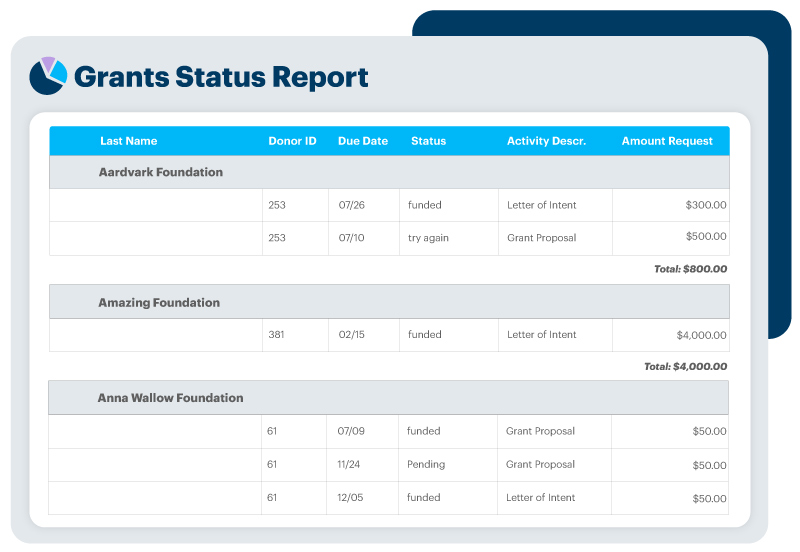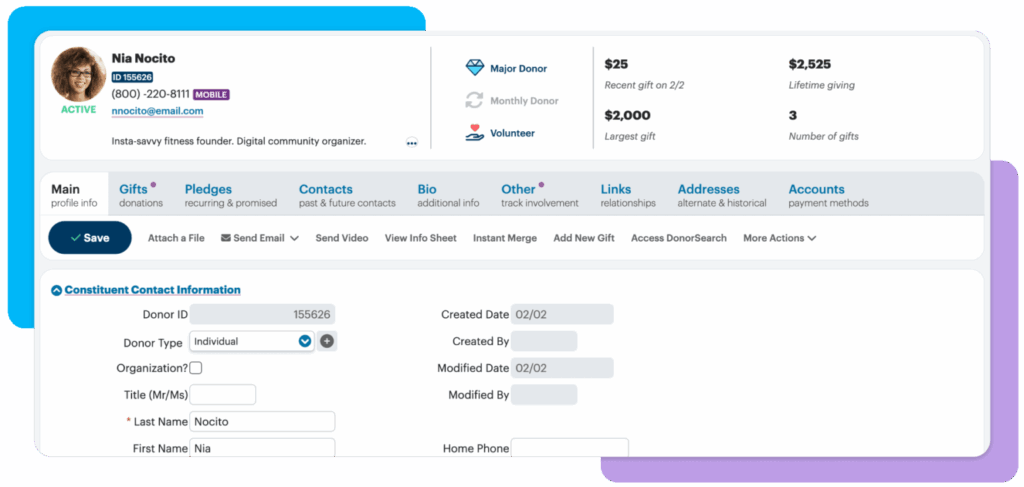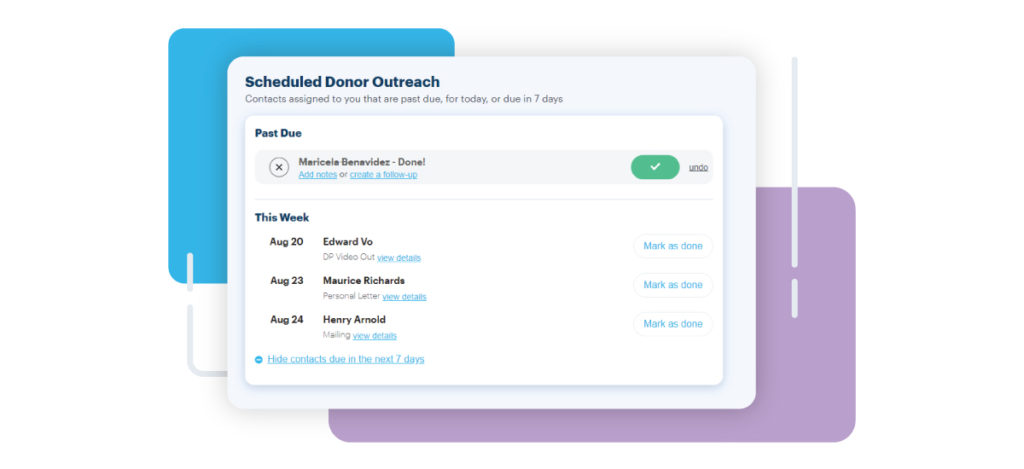Nonprofit Technology & Fundraising Blog
Subscribe to our mailing list

April 21, 2025 | Fundraising Operations, Nonprofit Trends, Planning
When it comes to funding your nonprofit’s mission, grants are a powerful resource. But navigating the grant application, especially those offered by the government, can be overwhelming. From federal opportunities to local community support, each type of grant for nonprofits has its own nuances.
In this guide, we’ll break down the differences and commonalities between federal, state, and local grants, and share tips for finding and applying to each, so your team can confidently pursue the funding you need to make a difference.
Whether the funds come from Washington, your state capital, or city hall—most government grants for nonprofits follow similar patterns. Knowing these shared elements can help you build a strong foundation for your grant applications.
Never miss a grant deadline with DonorPerfect’s contact reminders and scheduled reports that land right in your inbox with a frequency you set.

Before you even start searching for grants for nonprofits, it’s essential to assess whether your nonprofit is grant-ready. From financial systems to staffing, this section helps you prepare your internal operations so you can compete with confidence.
Government grants—especially at the state and federal level—often come with complex requirements, both before and after the funding is awarded. Here’s how to build your internal capacity to succeed:
With DonorPerfect, you can centralize your documentation, track grant deadlines, and stay on top of reporting—all in one place.

Now, let’s break down how each level of government approaches grantmaking.
Overview: Federal grants for nonprofits are issued by U.S. government agencies such as the Department of Health and Human Services, the Department of Education, and the National Endowment for the Arts. These grants tend to be large, competitive, and require detailed proposals.
Dun & Bradstreet help organizations manage risk, drive growth, and secure funding opportunities. For nonprofits, having a DUNS number is a critical step in applying for federal grants, enabling greater access to public funding streams.
Overview: State governments also offer grants for nonprofits, often to support programs within their own borders. These might be funded by state budgets or passed down from federal programs. State-level grants are designed to support programs with regional impact. These opportunities are often tied to community needs and come from state agencies. Learn how to find them and how to build relationships that can strengthen your proposals.
Make sure your CRM works for you. DonorPerfect can help you track key relationships, so you can build a strong rapport with the connections that will drive your fundraising success.

Overview: Local governments, including counties, municipalities, and city agencies, often provide small, targeted grants for nonprofits to support grassroots initiatives and community-based organizations. Local grants are a great way to get started with public funding. They’re usually smaller in size but deeply rooted in community development.
Keep approaching deadlines front and center with DonorPerfect’s scheduled donor outreach. Your dashboard can list out your upcoming tasks and deadlines so you never miss an opportunity again.

Rather than chasing every opportunity that appears in your inbox, it’s more effective to develop a grant strategy that aligns with your nonprofit’s mission and capacity.
Here’s how:
Join us at the 2025 DonorPerfect Community Conference!
Looking to strengthen your grant strategy and make the most of your DonorPerfect tools? The DonorPerfect Community Conference is a free, virtual event happening June 3–4, designed to help fundraising professionals like you build stronger donor relationships, streamline systems, and drive real impact.

A strong strategy ensures your team isn’t just reacting to opportunities but actively pursuing funding that supports your long-term mission.
Not every grant is the right fit. Use this checklist to evaluate whether a grant matches your capacity, mission, and goals—so you invest your time where it counts. Before diving into an application, ask:
Successful grant-seeking isn’t just about finding money—it’s about building sustainable partnerships with funders at every level. Whether you’re applying for a major federal award or a small local grant, DonorPerfect can help you organize your efforts, track communications, and measure outcomes so you’re always ready for your next opportunity.
Let your mission lead the way, and let the right grants power your path forward.
Explore how DonorPerfect can support your nonprofit’s grant strategy with powerful tools and reports.
Follow us on social!